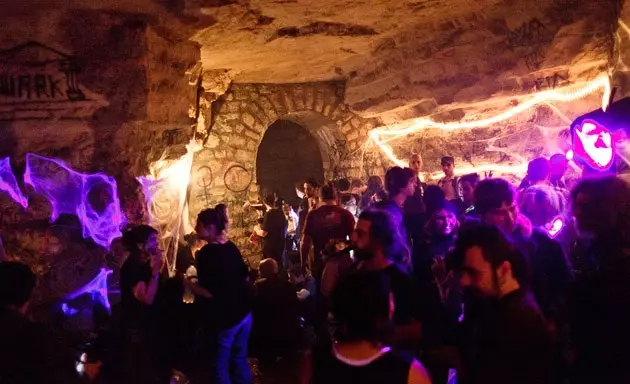
Halloween party in the Catacombs of Paris
Nico , our guide to the catacombs, has been going down the undergrounds of Paris almost every week for nine years . In its intricate corridors and rooms he has attended concerts, parties, exhibitions and has met more than one girlfriend. This urban explorer is part of the group of approximately 700 cataphylls that regularly traverse one of the most extensive underground networks in the world . Its ranks are made up of artists, veterans who have been exploring these tunnels for more than 20 years, anti-system youth, the curious and even some famous character. What unites such a diverse palette of characters is the enjoyment of a unique world in which there are no restrictions or prohibitions and where everyone can express themselves freely.
The Paris Catacombs date back to Roman times, when they began to be used as stone quarries. Over time, this network of tunnels and passageways was spreading anarchically and Louis XVI used it as a repository for the bones of six million Parisians. From then on, they became known as the Catacombs. During World War II, the Allies used them as supply networks and as a hideout for agents. In 1955 it was definitely banned. its entrance, with only a small part (barely one kilometer) of the entire network remaining open to the public.
The ban was not an obstacle and, from the 70s and 80s, the first underground explorers , associated with the punk movement of the time, began to tour the intestines of the city, leaving us their first artistic expressions there and sowing the seeds of a movement of passionate underground culture: the cataphiles. Also from that time dates the special police command that patrols it on a regular basis . Violators are required to pay a fine of 60 euros each time they are intercepted.
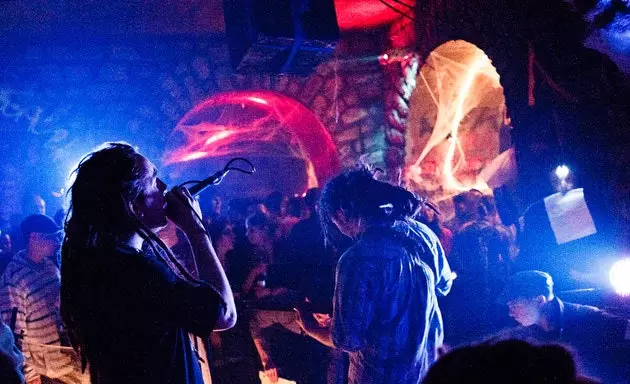
A concert in Sala Z
Our rendezvous point is District 13 (south of the city) where there is a well-guarded tunnel entrance to a train track that is no longer in use: " There are no fixed entrances", Nico, our guide, tells us, "they open and close . They are usually in discreet places where no one can see us enter, although the other day they opened an entrance in the same place Saint Michel and people freaked out when they saw us go down, ”he continues.
We begin to prepare the descent. I'm nervous, I confess. I don't know what I'm going to find in there. Nico has lent me rubber boots that reach almost to my waist (we will pass through areas where there is a lot of accumulated water) and he laughs at my rudimentary supermarket flashlight while he shows me his sophisticated ones.
I breathe when I see that the entrance is not the dangerous descent that I had imagined and that it allows me to descend with relative comfort just by dragging myself and giving myself the occasional bump on the head. Today is a Tuesday and according to Nico we won't meet too many people. “The strong days are especially Fridays and Saturdays . Although you always run into people. There are friends of mine who spend whole days wandering through the tunnels. We go through a semi-crouched gallery and after a few minutes we reach a well-ventilated tunnel that allows us to walk on foot. Nico explains that, since the General Directorate of Quarries took over the maintenance of the underground network, work has been carried out to improve ventilation and stability and that, today, security conditions are optimal.
“The only real danger here is getting lost in the intricate web of galleries, passageways and rooms,” he tells me. He must have caught a hint of concern in my eyes because he immediately pulls out a carefully laminated folder with detailed maps of each and every gallery from my backpack.
The really amazing thing about this underground world is that it is constantly changing. the cataphylls they not only explore it, but somehow seek to leave their mark on it , whether in the form of artistic expressions that cover many of the walls, excavating new tunnels or passageways, or creating rooms that will be used by members of this underground community.
This is the case of the room named Sala Sarko (after President Sarkozy) in which Nico himself has collaborated by molding the limestone in the form of a table and benches. Niches have been excavated in the walls to place candles and lamps . These rooms are used as a meeting point, to eat, smoke, sleep, read or simply relax. Anyone can “appropriate” a space and create a room. Although, as Nico explains, these types of "plans" are consulted with the rest of the community.
In fact, cataphiles submit to a rigorous code of ethics to preserve and protect this underground world. Our disciplined guide once again reminds us of the rules: “No rubbish. Everyone picks up his waste. And be careful with your backpack when passing through the galleries with paintings, "he warns.
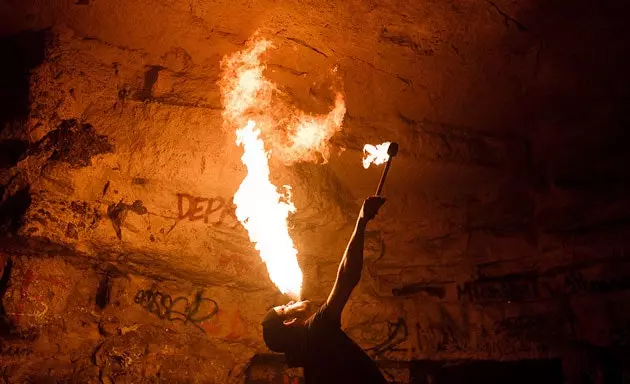
Parties of up to 300 people are held here.
And speaking of laws, Is it common to meet the police patrolling the catacombs? Nico tells me that, in nine years, he has only been fined twice: "the old inspector bothered us a lot." And to prove it to me, he takes out of his backpack a plaque in the shape of a cigarette pack on which you can read a typical joke of the cataphiles: "Major Regis nuit gravement aux cataphiles" (that is, "Inspector Regis seriously harms the cataphiles "). Today the situation has changed radically and the new inspector of this police unit turns a blind eye to the activities of this community.
We have been walking for more than two hours through tunnels and galleries decorated with graffiti, sculptures and paintings, we have passed through an improvised library, and even through a room full of bones. At last we arrive at one of the must-see rooms: the Beach. It is so called because the soil is covered with a layer of fine sand. . On one of the walls we can see the reproduction of the famous Kanawaga wave by the Japanese artist Hokusai, one of the most emblematic images of the underground network.
La Playa occupies a space where beer was brewed in the 19th century. Nico tells us that a Belgian company has bought the rights to the old brand and is considering relaunching it. So maybe soon we'll see advertising for "catacomb beer, the most refreshing underground taste" or something like that. Very close to here, there is access to Sala Z, where on weekends music groups of all kinds animate parties of up to 300 people . It is located just below the Val de Grâce hospital.
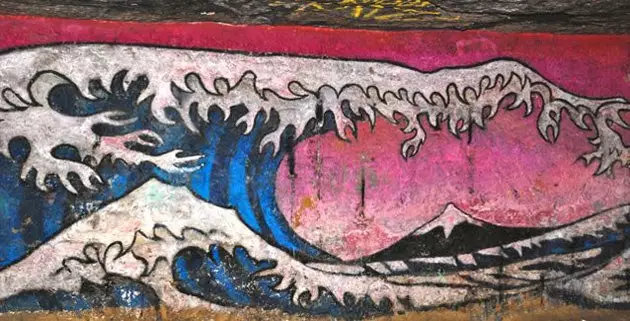
The famous room La Playa
At the end of a tunnel we hear the animated voices of a group of young people and Nico tells us that **we have reached the grave of Philibert Aspairt**. Legend has it that in 1793 a porter from the Val de Grâce went looking for wine, apparently hidden in one of the catacombs, and got lost. It was found 13 years later and the inspector of the General Department of Quarries had a tomb built in his memory.
This is one of the most popular meeting points in the Catacombs and small parties are often held here. Today is the birthday of a chemistry student and a dozen people have gathered around poor Philibert's grave to celebrate. Our guide tells us that the ritual of the cataphiles when passing by the tomb is to have a drink in his memory . Said and done: he takes his flask out of his backpack and we all share a delicious herbal liqueur.
We have been exploring this fascinating underground world for more than five hours and I still wonder if there is something else capable of surprising me. Suddenly we went through a narrow tunnel literally crawling and we appear by magic in La Sala del Sol, a space dedicated to the world of cinema , on whose walls there are paintings of different characters such as Jack Nicholson, John Travolta in Pulp Fiction or Charles Chaplin.
I feel like I'm in a movie and not just because of this last visit, but because after or eight hours underground , the underground world has begun to become the real world. I'm not the only one: the cataphils refer to the Paris of light almost contemptuously as "up there on the surface" . For them, what counts is that of darkness, that of latticework galleries and tunnels where they breathe the freedom they yearn for in an ultra-regulated and prohibitionist society. Here everything (or almost everything) is possible. The light of dawn surprises us coming out of the catacombs and I wonder if it was all a dream.
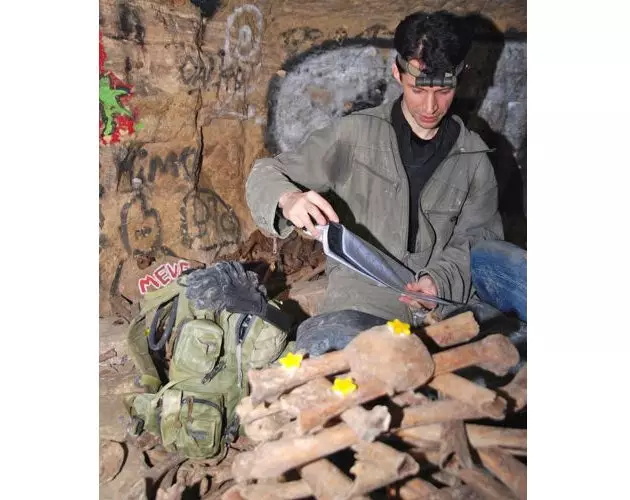
Nico, the cataphil who guided us
After this exciting story, we know that there are now guided tours of the Catacombs from a totally different perspective. All the detailed information is available on its official website.
